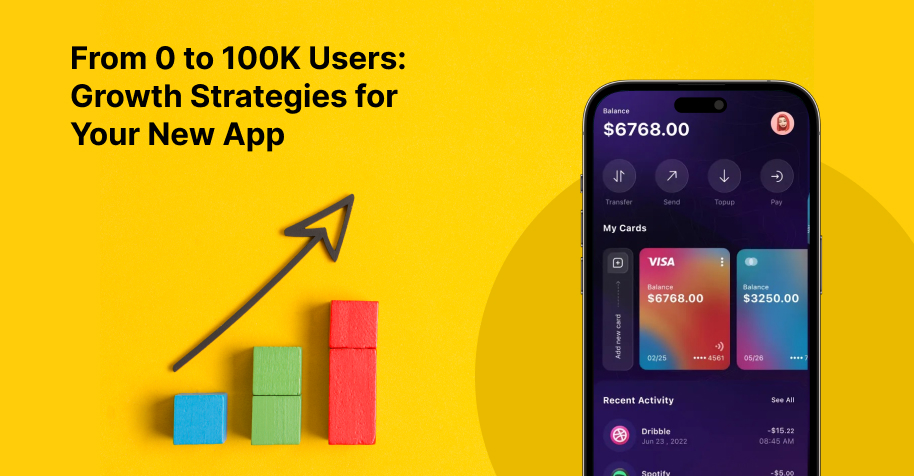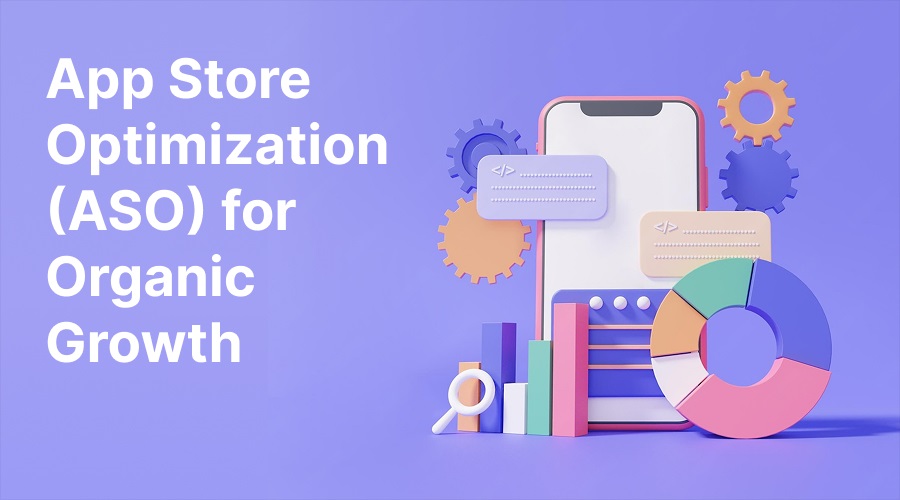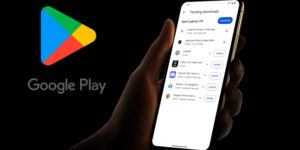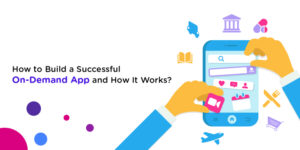
Growing a new app from zero to 100,000 users is not just challenging, it is a process that distinguishes successful apps from the millions that fail to get started. You are vying in a marketplace where more than 5 million apps compete for visibility across iOS and Android platforms. The chances may look overwhelming but with the right app growth strategies and directed execution, you can create substantial momentum.
The difference between apps that get stuck and apps that scale rests on strategic thinking. You need a user-focused strategy that extends beyond merely creating features. Your success hinges on knowing what drives user acquisition, retention and advocacy in today’s competitive environment.
I have seen countless apps hit the market with fantastic ideas but not make it past their first 10,000 users. Why? They made growth an afterthought rather than a conscious plan integrated into every part of their product and marketing.
This guide takes you through tested mobile app growth strategies that succeed in 2024. You will learn how to maximize your app store visibility build communities that boost your coverage, use organic and paid channels and develop launch momentum that converts early adopters into evangelists. Each step in this strategy leverages the previous one by developing an end-to-end roadmap from your initial download to 100K users and beyond.
Understanding the Mobile App Landscape
The mobile app industry operates at a scale that is hard to comprehend. With over 5 million apps available across iOS and Android platforms you are entering one of the most saturated digital markets in existence. Mobile app competition has reached unprecedented levels where even exceptional products can disappear into obscurity without the right growth approach.
➢ Challenges You Will Face
You will face several app market challenges from day one:
1. Discovery Issues: Users typically download apps through direct searches or recommendations not by browsing categories.
2. Limited Usage: The average smartphone user has 80 apps installed but regularly uses only about 9 of them.
3. Costly User Acquisition: The cost of acquiring new users is increasing every year.
4. Short Attention Spans: Users will abandon your app within seconds if it does not immediately demonstrate value or if the onboarding experience feels clunky.
➢ Your Competitive Advantage
Understanding user behavior becomes your competitive advantage in this landscape. Different demographics interact with apps differently:
● Gen Z users expect seamless social features and instant gratification.
● Professionals prioritize efficiency and integration with their existing workflows.
You need to map out exactly how your target users discover apps what problems they are actively trying to solve and what triggers them to hit that download button.
1. Product Focus and Development
You can not growth-hack your way out of a bad product. Before you think about marketing campaigns or paid ads you need to build something people actually want to use. Product development starts with identifying a genuine pain point and crafting a solution that addresses it better than existing alternatives.
I have seen countless apps fail because founders rushed to scale before achieving product-market fit. You will know you have reached this milestone when users start recommending your app without prompting when retention rates climb naturally and when people express genuine frustration if they can not access your product. This is not about having every feature imaginable it is about nailing the core user problem solving that makes your app indispensable.
The development process does not stop at launch. Your first version should be lean enough to ship quickly but robust enough to deliver real value. Instagram started as a simple photo sharing app with filters. Uber began with basic ride hailing in San Francisco. Both focused relentlessly on doing one thing exceptionally well.
Build feedback loops into your product from day one:
● In-app surveys triggered after key actions
● Direct communication channels with early adopters
● Analytics tracking user behavior patterns
● Regular user interviews to uncover hidden friction points
Your roadmap should evolve based on what users tell you they need not what you assume they want. This iterative approach transforms good products into great ones that users can not live without.
2. App Store Optimization (ASO) for Organic Growth

App Store Optimization (ASO) is important to get users in a durable and inexpensive manner. With so many applications competing to get noticed, it’s imperative to enhance your rank in search results to gain more downloads.
➢ Importance of App Title in ASO Rankings
Your app name has a lot of weight on your ASO rankings. It is essential to find a balance between keeping your brand identity and incorporating the proper keywords. Rather than just taking Budgetly as your app name, take the name Budgetly: Expense Tracker & Money Manager. Through this method, you are able to target more search queries while properly communicating what your app is about.
➢ Strategic Keyword Placement in App Description
As far as the app description is concerned you must strategically position your keywords. But at the same time the description should be readable and compelling. Begin by introducing your key value propositions and integrating relevant keywords in the first 2-3 lines because this text is visible before people click more. Throughout the rest of the description make sure to naturally integrate additional keywords to improve your ranking for various search terms.
➢ Visual Elements that Impact Conversion Rate
The visual elements of your app listing can greatly influence how many people decide to download your app:
● Icon design: Keep it simple and easily recognizable even at small sizes. Make sure it stands out from competitor icons.
● Screenshots: Instead of just showcasing features use screenshots to tell a story about how your app solves specific problems.
● Preview videos: If you have videos available make sure they grab attention within the first 3 seconds by demonstrating the value of your app.
➢ The Power of Reviews and Ratings
Reviews and ratings act as social proof that can impact both your rankings and conversion rates. Although you can not directly manage this process you can invite pleased customers to leave reviews at appropriate times like immediately after they have done something or reached a milestone in your app. Target a rating of 4.5 stars or better as this has been proven to drive dramatically more organic downloads than apps with lower ratings.
3. Building a Strong Community Around Your App
Community building makes passive users into loyal advocates who propel your apps success. Creating spaces where users feel they are being heard, valued and connected to your product’s mission is important.
➢ Engage Through Various Platforms
You can use different platforms to engage with your users and build a strong community:
● Discord servers: Create a dedicated server for your app where users can chat ask questions and share feedback.
● Facebook groups: Set up a private group where users can connect with each other and discuss topics related to your app.
● Subreddit communities: Start a subreddit specifically for your app allowing users to post discussions ask for help and share tips.
When you are engaging in these discussions answer these questions and post behind-the-scenes news you are building emotional bonds extending beyond the common user-product relationship. I’ve watched apps increase retention rates by half just by being present and interactive in their community areas.
➢ Involve Users in Shaping Your Product
User engagement reaches its highest point when you invite your community to influence the future of your product. Here are some ways to create feedback loops:
1. Conduct regular surveys asking users about their pain points and desired features.
2. Implement beta testing programs that give early access to new functionality.
3. Share public roadmaps where users can vote on upcoming priorities.
4. Hold Feature Friday sessions where you discuss user-submitted ideas.
This method creates brand loyalty that cannot be matched by paid advertising. Users involved in contributing to your apps development become emotionally attached to its success.
➢ Turn Engaged Users into Brand Advocates
Your most active users automatically become your brand ambassadors. These fans leave authentic reviews create content people generate and introduce your app to their networks. You can accelerate this by rewarding the best contributors with special benefits highlighting their achievement stories or designing referral schemes that pay for word of mouth. A single recommendation from a well-trusted community user will drive more users than several paid ad exposures.
4. Leveraging Social Media Marketing for User Acquisition
Social media sites are now a necessary means for app development that provides immediate access to billions of prospective users. You have to reach your audience where they already spend time whether thats browsing on Instagram, viewing TikTok videos or connecting on LinkedIn.
➢ Platform-Specific Strategies
Each platform requires a customized approach:
- Instagram thrives on visually compelling content and Stories that showcase your apps interface and benefits. In fact, the type of content that gets the most app downloads from social media often includes such engaging visuals.
- TikTok rewards authentic entertaining content that demonstrates your app solving real problems in creative ways.
- LinkedIn works best for B2B apps or productivity tools where you can share thought leadership content and engage with professional communities.
➢ Interactive Campaigns That Drive Downloads
Static posts we not cut it in todays crowded social feeds. You need to create interactive campaigns that demand participation:
1. Polls and quizzes that educate users about problems your app solves
2. Giveaways requiring participants to download your app and share with friends
3. Challenges that encourage users to create content featuring your app
These activities generate organic reach while building excitement around your brand.
➢ Micro-Influencer Partnerships
Working with micro-influencers (10K-100K followers) provides higher ROI than famous endorsements. According to a comprehensive analysis of influencer types in digital marketing these creators maintain authentic relationships with niche audiences that match your target users. You get genuine recommendations from trusted voices not obvious advertisements.
Search for the influencers who share your values and whose audiences actually interact with their posts.
5. Accelerating Growth with Paid Advertising Strategies
Organic growth takes time and paid ads can dramatically compress your timeline from 0 to 100K users. When you have validated product-market fit and understand your user acquisition costs strategic paid advertising becomes your accelerator.
➢ Google Ads: Capturing Intent-Driven Users
Google Ads excels at capturing intent-driven users actively searching for solutions your app provides. You can target specific keywords related to your apps functionality appearing exactly when potential users need what you offer. App install campaigns on Googles network reach users across search YouTube and millions of partner apps.
➢ Facebook Ads: Targeting Discovery-Based Acquisition
It (including Instagram placements) shines for discovery based acquisition. The platforms sophisticated targeting lets you reach users based on demographics, interests, behaviors and lookalike audiences modeled after your best existing users. I have seen apps reduce their cost-per-install by 40% simply by creating lookalike audiences from their most engaged users.
➢ Different Ad Formats for Different Purposes
Different ad formats serve different purposes:
- Video ads: demonstrate your apps value proposition in 15-30 seconds perfect for showing actual product functionality
- Carousel ads: let you showcase multiple features or use cases in a single ad unit
- Collection ads: combine video with product catalogs for e-commerce or marketplace apps
- Playable ads: (for games) allow users to try before they download
➢ Testing and Scaling Campaigns
Start with small daily budgets across multiple ad sets, testing different audiences, creatives and copy. The data you collect becomes invaluable for scaling campaigns that actually convert.
6. Enhancing Visibility Through SEO & Content Marketing (For Web-Based Apps)

If you are building a web-based app, browser extension or SaaS product, SEO for apps becomes your secret weapon for sustainable and cost-effective growth. While mobile apps rely heavily on app store visibility a web-based application can tap into the massive search traffic that Google processes daily over 8.5 billion searches.
Search engine optimization drives qualified users to your landing pages without the recurring costs of paid advertising. When someone searches best project management tool for freelancers and finds your app ranking on page one they are already interested in what you offer. This intent-driven traffic converts at significantly higher rates than cold advertising audiences.
➢ Aligning Content Marketing with User Search Behavior
Your content marketing strategy needs to align with how your target users search for solutions:
- Identify high-intent keywords your potential users actually type into search engines (tools like Ahrefs or SEMrush reveal search volumes and competition levels)
- Create comprehensive guides and tutorials that demonstrate your apps value while naturally incorporating target keywords
- Build topic clusters around your core features a hub page about team collaboration with supporting articles on specific use cases
- Optimize technical elements including page load speed mobile responsiveness and structured data markup
- Earn quality backlinks from industry publications partner sites and guest posting opportunities
I have seen web-based apps generate thousands of monthly sign-ups purely from ranking for 10-15 strategic keywords. The content you create today continues attracting users months and years later compounding your growth without additional investment.
7. Engaging Users & Providing Support for Retention (All Types of Apps)
Acquiring users is only half the battle keeping them engaged determines whether your app reaches 100K users or stalls at 10K. User engagement and customer support work together to transform one-time downloaders into loyal advocates.
➢ Timing Your Review Requests
The timing of your review requests matters significantly. You should prompt users for reviews immediately after they have experienced a meaningful win with your app. Did they complete their first project? Achieve a milestone? Thats your moment. Apps that wait too long or ask too early see dramatically lower conversion rates. I have tested this across multiple products and the sweet spot is always right after value delivery.
➢ Building a Strong Support Infrastructure
Your support infrastructure needs multiple touchpoints:
- In-app chat for immediate assistance when users hit roadblocks
- Email support for detailed troubleshooting and follow-ups
- Help centers with searchable FAQs and video tutorials
- Community forums where power users can assist newcomers
Response time directly impacts retention. Users who receive support within 2 hours are 3x more likely to remain active compared to those waiting 24+ hours. You do not need a massive team initially tools like Intercom, Zendesk or even a well-managed Discord server can handle thousands of users efficiently.
➢ Viewing Support as an Opportunity
The most successful apps I have studied treat every support interaction as an opportunity to deepen relationships not just solve problems.
8. Strategic Launch Approaches to Create Buzz Around Your App Launch (All Types of Apps)
Your launch strategy can make or break your journey from 0 to 100K users. The way you introduce your app to the market sets the tone for everything that follows.
1. Harnessing the Power of Scarcity
Building a waitlist before your official launch creates psychological anticipation. You are not just releasing another app you are offering access to something exclusive. This approach works because people naturally want what they can not immediately have. I have seen apps generate thousands of sign-ups simply by positioning themselves as invite-only during their beta phase. You can sweeten the deal by offering early adopters special perks like lifetime discounts or premium features.
2. Maximizing Launch Platform Visibility
Product Hunt remains one of the most effective platforms for gaining early traction within tech-savvy communities. Launching on Product Hunt on a Tuesday, Wednesday or Thursday typically yields better results than weekend launches. You will want to prepare your community beforehand notify your email list engage your social media followers and coordinate with supporters to upvote and comment on launch day.
BetaList serves as another valuable platform for pre-launch visibility. The platform specifically caters to early adopters who actively seek new products to test. You are essentially reaching users who want to discover apps like yours making them ideal candidates for your initial user base.
Conclusion
Sustainable app growth from 0 to 100K users is not just about implementing the right tactics but it is about building something that matters to real people. You have seen the strategies: ASO, paid advertising, social media marketing and strategic launches all play their part. But here is what I have learned through my own experience: none of these tactics work in isolation.
The apps that truly succeed are the ones that foster loyal communities from day one. Your early users are not just numbers in your analytics dashboard they are your co-creators, your evangelists, your support team. When you invest time in understanding their needs, responding to their feedback and making them feel valued by creating a foundation that paid advertising alone can never replicate.
From 0 to 100K Users: Growth Strategies for Your New App requires patience, adaptability and genuine care for the people using your product. Build relationships not just user counts. Thats your competitive advantage in a crowded market.






